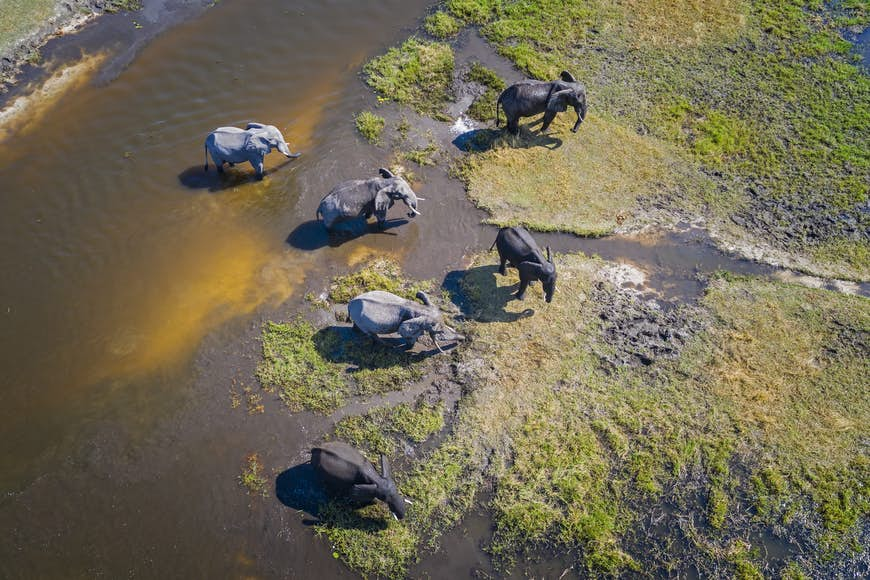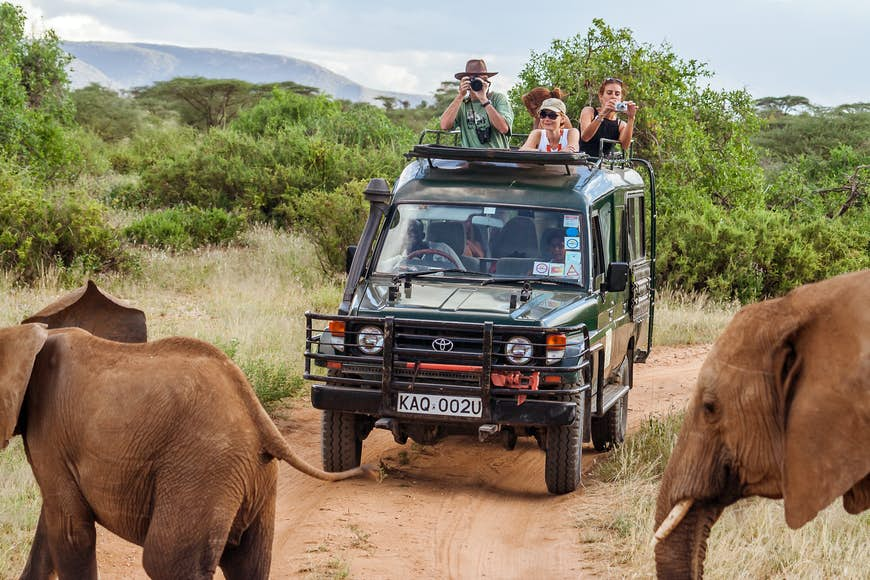The African elephant is a gentle giant, not to mention the earth’s largest land mammal and perhaps the most enduring symbol of nature’s grace and fragility.
While elephants are a common sight when safariing in Africa, they are also facing unprecedented threats to their existence. The imperative to understand more about them and experience them in the wild has never been stronger. In this guide, we help you to do both.
African elephants: the behemoths (and the hunted)
An adult African elephant is seriously large. A fully-grown male can weigh in at a massive 13,334lb (6048kg); even the smallest adult male rarely dips below 8820lb (4000kg), which is two-and-a-half times heavier than your average family car. Females are usually just over half the weight of the male. The size difference between the two is not quite as pronounced when it comes to height – the tallest males are 13ft (4m) tall, the tallest female rises to 11ft (3.4m). Apart from overall size, and unless the male is aroused, the most obvious difference between males and females is that females have an angular forehead, while a bull’s forehead is more rounded.
An elephant has the largest brain of any mammal; it can weigh up to 13lb (6kg). Its trunk, which serves an elephant like a hand, can be 6.6ft (2m) long and weigh over 287lb (130kg) – a trunk has no bones but may have 60,000 muscles in it. An elephant uses its tusks as both tools and weapons. The longest recorded tusks were 10ft (3m) long, while the heaviest reached 154lb (70kg).
Apart from humankind, elephants have few natural enemies. In some areas, such as Hwange National Park in Zimbabwe or, in the 1980s, in the Savuti region of northern Botswana, certain lion prides have learned to hunt infant and adolescent elephants.
If left alone, elephants can live to between 55 and 70 years old.
Where to go on your first safari in Africa

The elephant sisterhood
Elephants live in a close, cross-generational sisterhood of females. An elephant mother has one of the longest pregnancy periods in the natural world: around 650 days. Most often, the mother gives birth to a single calf, and that calf will be able to walk, albeit unsteadily, within hours of being born. Baby elephants continue to breastfeed throughout the first two years of their lives, and many will not be truly…
Click Here to Read the Full Original Article at Stories – Lonely Planet…
